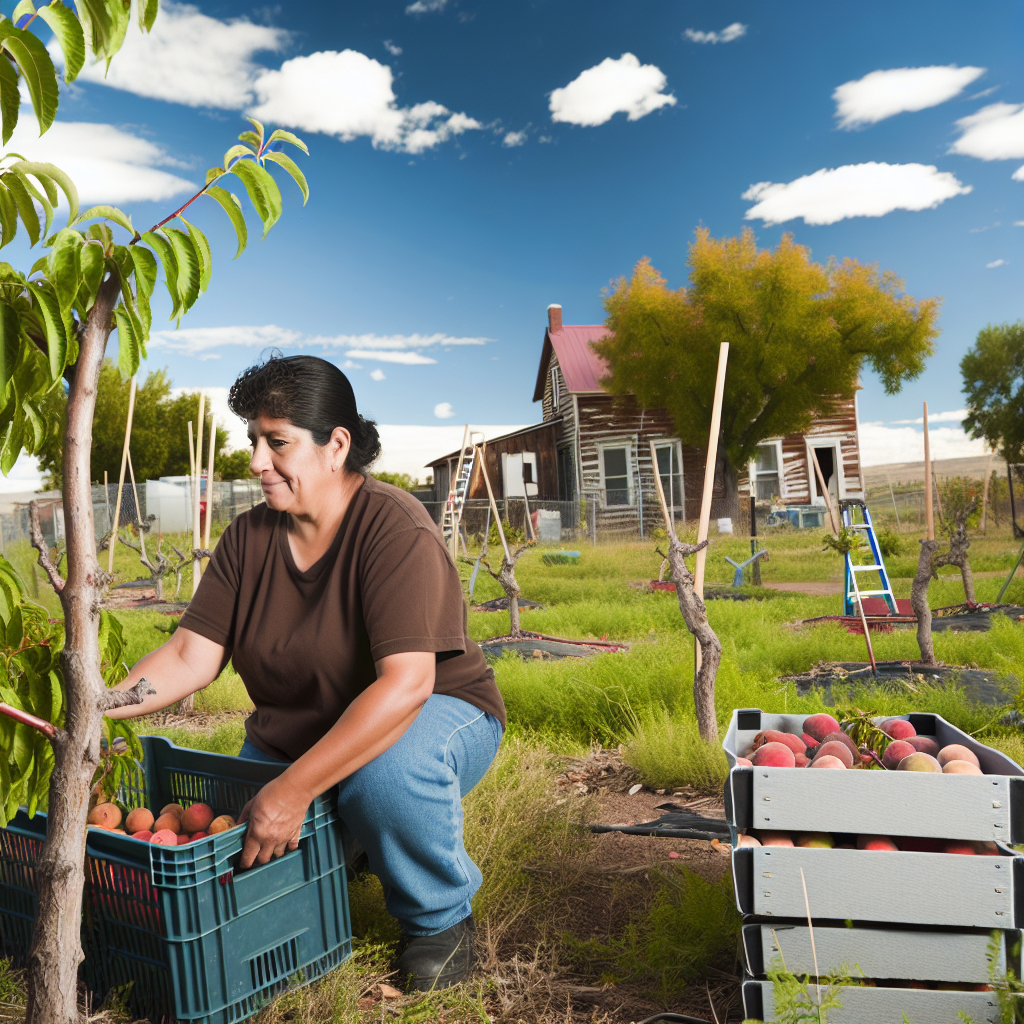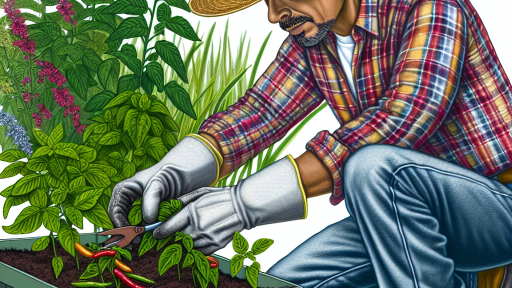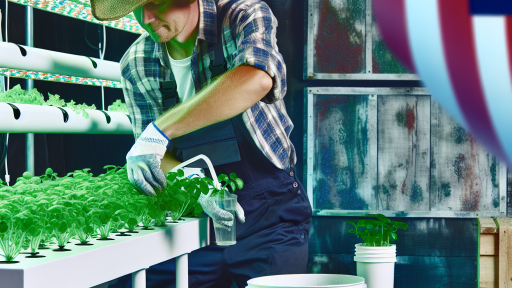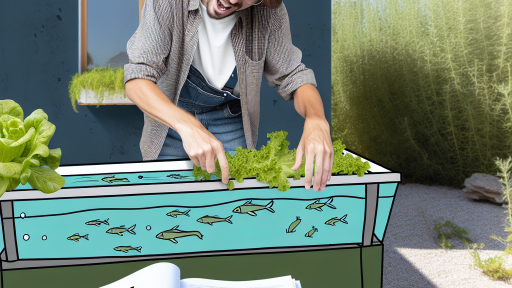Introduction to the Benefits of Integrating Fruit Trees in Small Farms
Integrating fruit trees into small farms offers numerous advantages.
First, fruit trees enhance biodiversity on the farm.
This biodiversity supports various beneficial insects and wildlife.
Additionally, they improve soil health through organic matter contribution.
Furthermore, fruit trees help prevent soil erosion and maintain moisture levels.
Economic Advantages
Incorporating fruit trees can generate additional income for farmers.
The fruits can be sold directly at markets or through pick-your-own operations.
This income diversification reduces economic risk.
Moreover, value-added products can increase revenue potential.
Examples include jams, jellies, and dried fruit.
Environmental Benefits
Fruit trees provide shade and reduce temperature extremes.
This microclimate benefits other crops and livestock.
They also capture carbon dioxide, mitigating climate change effects.
Furthermore, fruit trees enhance aesthetic appeal on the farm.
Social and Community Benefits
Integrating fruit trees fosters community engagement.
Transform Your Agribusiness
Unlock your farm's potential with expert advice tailored to your needs. Get actionable steps that drive real results.
Get StartedThey encourage local food production and promote healthy eating habits.
Moreover, orchards can serve as educational resources for schools.
This promotes awareness of sustainable farming practices.
Choosing the Right Fruit Trees for Diverse Small Farm Environments
Understanding Local Climate and Conditions
Begin by assessing your local climate.
Different fruit trees thrive in various temperature ranges.
For instance, citrus trees prefer warmer conditions.
In contrast, apples grow best in cooler climates.
Next, evaluate your soil type.
Soil can vary widely, affecting tree growth and fruit quality.
Conduct a soil test to determine pH levels and nutrients.
Selecting Fruit Varieties
Once you understand your environment, research suitable fruit varieties.
Consider planting a mix for diversity in production.
Popular choices include apples, peaches, and pears.
Exotic fruits like figs or pomegranates can also be unique additions.
Moreover, consult local extension services for expert guidance.
Assessing Space and Layout
Your farm size influences tree selection and spacing.
Smaller farms benefit from dwarf or semi-dwarf varieties.
These trees take up less space and are easier to manage.
Plan your layout carefully to allow for adequate sunlight.
Avoid overcrowding, as it can lead to poor air circulation.
Considering Pollination Needs
Some fruit trees require cross-pollination to bear fruit.
Identify self-pollinating varieties for easier planting.
Otherwise, plant compatible species nearby.
Research bloom times to ensure overlap during the growing season.
Showcase Your Farming Business
Publish your professional farming services profile on our blog for a one-time fee of $200 and reach a dedicated audience of farmers and agribusiness owners.
Publish Your ProfileMaintenance and Care Requirements
Each fruit tree has different maintenance needs.
Factor in watering, fertilization, and pruning requirements.
Investigate pests and diseases commonly affecting specific fruit trees.
This knowledge will help you plan for preventative measures.
Moreover, consider time and resources available for maintenance.
Soil Preparation and Management for Fruit Tree Planting
Importance of Soil Health
Healthy soil is vital for the growth of fruit trees.
It provides essential nutrients and supports root development.
Additionally, good soil health enhances water retention.
This ultimately contributes to better fruit yields.
Testing Soil Quality
Start with a soil test to assess its quality.
This test reveals pH levels and nutrient content.
Based on results, make informed decisions for amendments.
Consider testing every few years to monitor changes.
Amending Soil
Soil amendment enhances fertility and structure.
Add organic matter like compost or well-rotted manure.
These amendments improve soil aeration and drainage.
Incorporate lime to raise pH if the soil is too acidic.
Site Selection
Choose a site with optimal sunlight and airflow.
Fruit trees thrive in full sun and need good air circulation.
Avoid low areas where cold air collects.
Well-drained soil is essential to prevent root rot.
Preparing the Planting Site
Clear the site of debris and weeds before planting.
Use a shovel or tiller to break up compacted soil.
Create planting holes that accommodate root systems.
Ensure holes are twice as wide as the root ball.
Water Management
Proper watering is crucial during establishment.
Water deeply and infrequently to encourage deep roots.
Use mulch around trees to retain moisture.
Monitor soil moisture regularly, especially in dry periods.
Ongoing Soil Management
Continue to test soil every few years.
This ensures that nutrient levels remain adequate.
Adjust your management practices according to test results.
Regularly incorporate organic matter to sustain soil health.
Discover More: Seed Storage Tips Every Farmer Should Know
Designing an Efficient Layout for Fruit Tree Integration
Understanding the Importance of Layout
Effective layout design enhances fruit production.
It maximizes sunlight exposure and air circulation.
Additionally, a well-planned layout simplifies maintenance tasks.
Choosing the Right Space
Evaluate your available space before planting.
Consider the soil quality and drainage capacity.
Choose areas free from heavy shade from buildings or trees.
Showcase Your Farming Business
Publish your professional farming services profile on our blog for a one-time fee of $200 and reach a dedicated audience of farmers and agribusiness owners.
Publish Your ProfileTree Selection and Spacing
Select fruit tree varieties suited to your climate.
Plan for adequate spacing between trees to prevent competition.
Typical spacing ranges from 10 to 20 feet, depending on the species.
Incorporating Companion Plants
Introduce companion plants to enhance growth.
Consider planting herbs and flowers that attract beneficial insects.
Companion plants can also deter pests and weeds effectively.
Implementing a Multi-Layered Approach
Utilize vertical space by planting semi-dwarf varieties.
Consider intercropping with smaller plants in the spaces below.
This strategy increases yield and enhances biodiversity.
Creating Pathways for Access
Design pathways for easy access to each tree.
This consideration facilitates pruning and harvesting efforts.
Pathways also improve air circulation in the orchard.
Utilizing Irrigation Systems
Install an efficient irrigation system to support your trees.
Drip irrigation minimizes water waste and targets root zones.
Regularly monitor soil moisture to make necessary adjustments.
Monitoring and Adjusting Over Time
Regularly assess the layout’s effectiveness as trees grow.
Make adjustments in spacing or plant varieties as needed.
Remain flexible to adapt to changing conditions and challenges.
Uncover the Details: DIY Seed Cleaning Methods For Farmers
Watering and Irrigation Techniques for Newly Planted Fruit Trees
Importance of Proper Watering
Proper watering is crucial for the health of newly planted fruit trees.
It promotes root development and overall growth.
Without adequate water, trees may fail to thrive.
Additionally, overwatering can lead to root rot.
Understanding Soil Moisture
Evaluate the soil’s moisture levels regularly.
This practice helps in determining watering needs.
Use a soil moisture meter for accurate readings.
Furthermore, you can check by hand; the soil should feel damp but not soggy.
Watering Frequency
Newly planted trees need frequent watering initially.
Water them once or twice a week during dry spells.
Adjust the frequency based on weather conditions.
During rainy periods, reduce watering to prevent over-saturation.
Best Irrigation Techniques
Drip irrigation is the most efficient method for fruit trees.
This technique delivers water directly to the roots.
It minimizes water loss through evaporation.
Alternatively, soaker hoses can also be effective.
Watering Methods
Water trees slowly to allow proper absorption.
Try using a bucket or a garden hose with a water flow restrictor.
Furthermore, avoid watering at the tree’s base.
Instead, water around the drip line for optimal results.
Mulching for Moisture Retention
Apply mulch around the base of the tree.
Showcase Your Farming Business
Publish your professional farming services profile on our blog for a one-time fee of $200 and reach a dedicated audience of farmers and agribusiness owners.
Publish Your ProfileThis practice helps retain soil moisture and regulate temperature.
Consider using organic materials like wood chips or straw.
Additionally, mulch suppresses weed growth, protecting the tree.
Explore Further: Seasonal Maintenance Tips For Container Gardens

Pest and Disease Management for Fruit Trees in Small Farms
Understanding Common Pests
Fruit trees face various pests that threaten their health and yield.
Aphids are notorious for sucking sap from tender leaves.
Spider mites thrive in dry conditions and can weaken trees rapidly.
Additionally, fruit flies can ruin crops by laying eggs in ripe fruits.
Identifying Fruit Tree Diseases
Proper diagnosis of diseases is crucial for effective management.
Fungal infections, such as powdery mildew, can spread quickly.
Bacterial infections like fire blight are also common in apple and pear trees.
Viral diseases can stunt growth and reduce fruit quality significantly.
Preventive Measures
Prevention is key to managing pests and diseases effectively.
Regularly inspect trees for signs of pests or disease.
Maintain good sanitation practices by clearing fallen fruits and debris.
Use resistant tree varieties wherever possible.
Additionally, practice crop rotation to disrupt pest life cycles.
Integrated Pest Management Techniques
Integrated pest management (IPM) offers a comprehensive approach.
Start by monitoring pest populations regularly.
Utilize biological controls by releasing beneficial insects like ladybugs.
Employ mechanical controls such as traps for attracting pests.
Chemical controls can be an option, but target them carefully.
Organic Solutions for Pest and Disease Control
Organic options help manage pests sustainably.
Neem oil works effectively against a variety of pests.
Bordeaux mixture can treat fungal infections without harsh chemicals.
Additionally, introducing companion planting can deter pests naturally.
Regular Maintenance Practices
Consistent care contributes significantly to healthy fruit trees.
Proper pruning improves air circulation and reduces disease risk.
Mulching retains moisture and suppresses weed growth around trees.
Regular fertilization enhances tree vigor and resilience.
Monitoring and Record Keeping
Keeping detailed records helps track pest and disease patterns.
Note the timing of outbreaks and treatment actions taken.
This information aids in refining future management strategies.
Additionally, photographs can document conditions over time.
You Might Also Like: Strategies For Effective Seed Rotation
Harvesting and Marketing Strategies for Small Farm Fruit Production
Harvesting Techniques
Effective harvesting techniques ensure high-quality fruit production.
Timely harvesting maximizes flavor and nutritional value.
Farmers should monitor fruit maturity closely.
Implementing a staggered harvest can spread labor demands.
Using proper tools minimizes damage to the fruit and trees.
Showcase Your Farming Business
Publish your professional farming services profile on our blog for a one-time fee of $200 and reach a dedicated audience of farmers and agribusiness owners.
Publish Your ProfileTrained staff can enhance the efficiency of the harvesting process.
Post-Harvest Handling
Proper post-harvest handling preserves fruit quality.
Farmers should wash and sort fruit promptly after harvest.
Correct temperatures during storage and transport are essential.
Utilizing breathable containers helps maintain freshness.
Regular quality checks ensure that only the best fruit reaches the market.
Marketing Strategies
Identifying target markets is crucial for successful sales.
Local farmers’ markets provide a great venue for selling fresh fruit.
Online platforms can access a wider audience for direct sales.
Engaging in community-supported agriculture (CSA) programs enhances loyalty.
Promoting organic or sustainable practices can attract eco-conscious consumers.
Brand Development
Developing a strong brand differentiates a farm in the marketplace.
Crafting a unique story around the farm adds value to the brand.
Utilizing social media can increase visibility and engagement.
Visual branding through attractive packaging appeals to potential customers.
Partnerships and Collaborations
Collaborating with local restaurants can create new markets.
Partnering with schools promotes healthy eating habits.
Forming alliances with other local farms strengthens the community.
Joint marketing efforts can reduce costs for small producers.
Customer Engagement
Engaging directly with customers builds relationships and trust.
Offering farm tours can enhance consumer knowledge and interest.
Hosting workshops on fruit preservation creates additional revenue streams.
Gathering feedback helps farmers adjust products to meet market demands.
Case Studies: Successful Integration of Fruit Trees in Small Farms
Introduction to Case Studies
Exploring case studies highlights successful integration of fruit trees in small farms.
These examples provide valuable insights and practical techniques.
Case Study: Green Acres Farm
Green Acres Farm integrates apple trees within its vegetable plots.
This approach maximizes land usage and enhances biodiversity.
Farm owner Mia Thompson emphasizes the importance of crop rotation.
This practice improves soil health and reduces pest populations.
Furthermore, the apples harvested contribute to local markets.
Case Study: Riverside Orchards
Riverside Orchards focuses on growing citrus trees alongside berry bushes.
This combination allows for efficient water use in their irrigation system.
Owner Lucas Martinez shares that this method reduces water waste.
In addition, the different fruit types attract diverse pollinators.
Case Study: Urban Edible Forest
The Urban Edible Forest incorporates fruit trees in a community setting.
This initiative brings neighbors together to cultivate and maintain the garden.
Manager Sara Patel highlights educational workshops for residents.
These workshops teach sustainable practices and promote community engagement.
The harvest helps supply local food banks.
Benefits of Integrating Fruit Trees
Integrating fruit trees offers numerous ecological benefits.
Showcase Your Farming Business
Publish your professional farming services profile on our blog for a one-time fee of $200 and reach a dedicated audience of farmers and agribusiness owners.
Publish Your ProfileIt encourages biodiversity and improves soil quality.
Additionally, fruit trees provide shade and shelter for crops.
They also enhance the aesthetic value of farming landscapes.
Challenges in Integration
Despite the benefits, challenges exist in integrating fruit trees.
Competing for resources, such as sunlight and water, can be problematic.
Farmers must carefully plan tree placement to avoid these issues.
Additionally, pest management in mixed-crop environments requires attention.
Future Perspectives on Farm Sustainability
Successful case studies demonstrate the viability of integrating fruit trees.
These farms inspire others to adopt similar sustainable practices.
Through careful planning, small farms can thrive while benefiting their communities.




